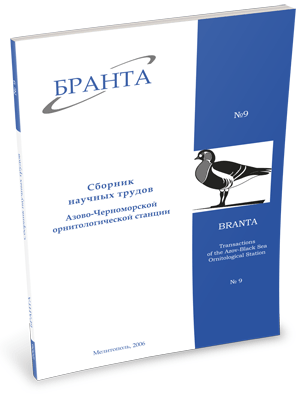
Transactions
of the Azov-Black Sea Ornithological Station



Roosting behavior of adult Magpies (Pica pica) and their broods in a breeding period
Brezgunova O.A.
The roosting behavior of breeding Magpies and their broods was studied over the period 2003-2005 in Kharkov city. Data were obtained from 22 individually color-marked chicks of S broods in the first breeding cycle and 10 chicks of 2 broods in a repeated breeding cycle. Birds were marked using individual color rings on the 10 20th days of their nest life (Baeyens, 1981). Our data indicate, that if the nesting territory is located approximately 150-300 m from a communal roost, then breeding males joined non-breeders at the communal roost in incubating and brooding periods and only females roosted on their nesting territories. On fledglings leaving nests, breeding females resumed spending night at the communal roost. Some parents leave fledglings alone on 10-14th day after hatching. In case if the nesting territories are situated over 1 km from the roosting territory, parents roost at their territories or males may roost on an adjacent nesting territory with another adult Magpies. During a repeated reproduction cycle the breeding pairs roosted outside of their territory at the communal roost, though the distance between the nesting territory and roosting site equaled 700-800 m in both cases. The off springs of the first and repeated breeding cycles roosted on the nesting territory approximately on 20-25th days after leaving the nest. During this period 21% (8 /38) of young birds disappeared and perished that presumably was related with peculiarities of parental roosting behavior. Fledglings began following their parents and using the communal roost at the age of 50 days.
Read the paper in a PDF file